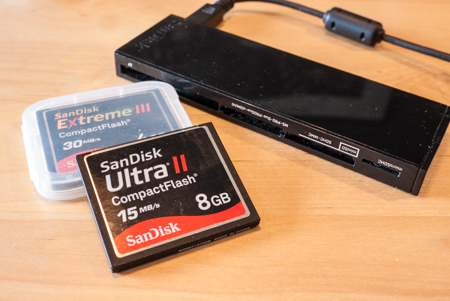Understanding Memory Cards
writer: russell j.t. dyer; posted: apr 2010; revised: oct 2017
With all storage devices (i.e., memory cards, computer hard drives), records are generally stored along tracks in a particular order. On freshly formatted storage device, records are generally written sequentially — one after another.
As an example of the above, suppose that you take ten photos on a digital camera. Ten image files will be written to the camera’s memory card in the order that they are created. However, if you delete the fith image file and the eighth one, when you take the eleventh photo, it may get written into the spot where the fifth image file was previously located. That’s no big deal. The computer (a.k.a., as your camera) can handle that. Here’s where it gets tricky: if the fifth photo was small in size because of what the image contained in the way of light and color, when eleventh image file is recorded to the memory card, the space available where the fifth image file was located won’t be big enough. So part of the eleventh image file will go in that space and the rest will go in the space where the eigth image file was located before you deleted it. If the eleventh image is very big and the space used by the fifth and eigth image files combined aren’t enough, it will put the rest of the new image file on the space just after the tenth image. The camera will the file into fragments.
This process of fragmenting images files allows the camera to make use of all of the space available. If it didn’t do this, you would run out of space on your memory card after a few rounds of taking photos and deleting bad shots. The problem with fragmented image files is that it can get out of hand after a while. If you keep deleting individually images, new images in time may be fragmented more than just one or two times, as in the example I described above. Think about it: if the eleventh image file is not large, but small and just manages to fit into the space where the fifth image file was located, but has a sliver of space left over, the camera will use that sliver for the twelfth photo when you take it. Eventually, it will go too far and not be able to piece together all of the slivers for some photos. Then it will tell you that some of your image files are corrupted and you may not be able to retrieve them.
To avoid too much fragmentation and possible file corruption, before starting an outing with your digital camera, you should delete all of the images on the memory card — after you’ve downloaded them to a computer and made back-ups. If you do this each time, you shouldn’t have problems with image files getting corrupted and lost. Also, since you will be working from a clean slate, the camera can write to the memory card faster: If you shoot a few shots rapidly, the camera can handle capturing and saving those images without having to deal with splitting files when saving the images to the memory card. You should occasionally reformat the memory card. Use the camera’s formatting process to do this. Don’t reformat the card on a desktop computer since the formatting may not be ideal for the camera’s system.
